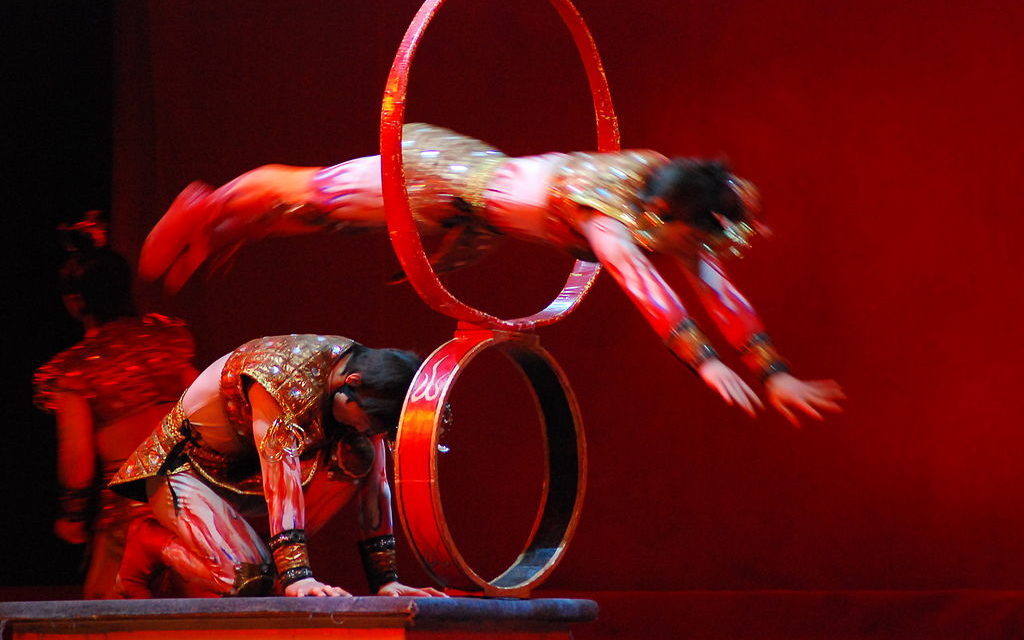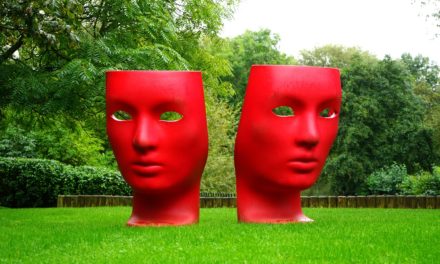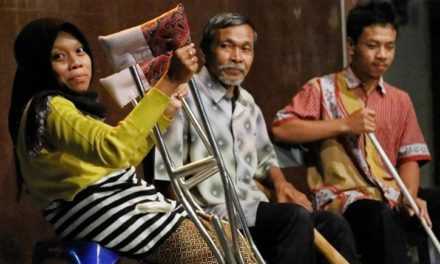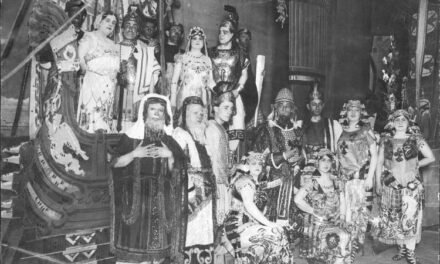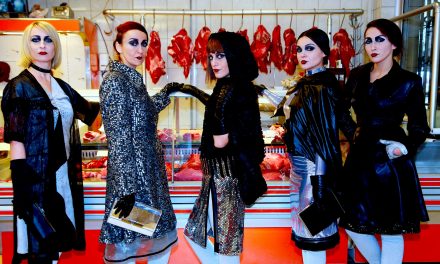“Sweet is the lore which Nature brings;
Our meddling intellect
Mis-shapes the beauteous form of things:—
We murder to dissect.”
Dear circus artists,
The above lines from William Wordsworth’s poem “The Tables Turned” are a striking expression of a number of the central elements of Romanticism: a penchant for the mysterious, the glorification of nature and the unknown, and an accompanying aversion toward intellectualism. “The Tables Turned” dates from 1798. At about the same time, the English poet John Keats grumbles to a writer friend at a dinner that the work of the scientist Isaac Newton had “destroyed all the poetry of the rainbow by reducing it to its prismatic colors.” [1]
As a cultural movement, Romanticism started in Europe at the end of the 18th century and lasted until the end of the 19th. However, Keats’ Romantic feelings appear to be deep-rooted. Even now, at least a hundred years later, they are latent in most reactions to my First Open Letter (December 2015). The authors of these reactions are angry and wonder why we should think about a circus, why it should be or become art, and why craft is not sufficient. Their objections are ones that John Keats might have recognized: that the magic of circus is destroyed by reflecting on and writing about it. That circus is an experience that cannot be captured in words. That a circus is a place where we can get closer to who we truly are, away from the everyday world and from everyday thinking. The majority of the reactions were from people who are themselves professionally involved in circus, in one way or another, whether it be as a teacher, a social circus worker, or a circus performer – and it is the last of those which worries me. After all, I often encounter it in my practice as a circus dramaturg, working with artists who are reluctant to give a name to what they do or want to do for fear of ruining ‘it.’ ‘It’ stands for intuitive creativity, physicality, sincerity, flow, and inspiration. But ‘it’ is also the authenticity and the utopia that the circus embodies for many people. In this way, the dramaturg, and by extension these Open Letters, becomes the unsettling embodiment of that which will ruin ‘it’: thinking.
As the Dutch cultural philosopher, Maarten Doorman suggests in his book De romantische orde, this interpretation of theory and analysis as a distancing function that detaches us from what life is really all about is one of the enduring legacies of Romanticism. Another stems from the Romantic project to set body and mind, and thinking and doing, against one another as opposites. The Romantic line was to extol, and to long to return to, the physical and the natural as sources of spontaneous creativity and inspiration in an otherwise corrupt world. In fact, in Doorman’s view, an essential characteristic of the Romantic attitude is that it framed its thinking always in terms of paradoxes or things that are seemingly opposed.[2]
This is what Wikipedia has to say about the paradox: “A paradox is a seemingly contradictory situation that appears to conflict with our sense of logic, our expectations or our intuition. ‘Seemingly,’ because the supposed conflict is usually based on a logical fault or an error of reasoning.”[3] So a person who thinks in paradoxes introduces boundaries and divisions between statements, propositions, or concepts which are not in fact opposed. Doorman also argues that most Romantic paradoxes emerge from the basic emotional structure of Romanticism, that of impossible longing.[4] This longing mainly centers on the Romantic ideal of freedom as authenticity, spontaneity, and uniqueness. These Romantic fault lines are in their turn intimately linked to the cultural context of the 19th century: the belief in progress, the emergence of capitalism, industrial expansion, and colonialism. The modern nomadic circus, which came into being in roughly the same period, also arose out of the paradoxes of this cultural context: the self versus the other, reason versus emotion, norm versus difference, old versus new, etc. Since then the world has changed considerably, and yet contemporary circus often presents itself as a practice that redraws old Romantic fault lines between reason and emotion, center and margin, and physical ideal and aberration.
Today’s circus rests much of its identity on a self-devised, and quite Romantic, image of its own practice as a marginal art form enjoying its own freedom. Even putting aside the question of whether this image is accurate in the contemporary scene, it has become very difficult to separate the romantic clichés that surround the circus from an understanding of circus as a medium.[5] As a result, we still reproduce the same romantic myths of the circus in our contemporary practices, which in turn leads to performances that always take circus itself as their theme. If we want to mark out an area for specific artistic research in circus, it is worthwhile reflecting on the Romantic paradoxes and images that shape and surround circus. Even if only to be able to ask the question underlying the myth: is there such a thing as circus as a medium? Is there anything left once we have stripped away all the myths? Or is a circus in fact simply that entanglement of myth, Romantic paradox, and nostalgia that repeatedly obscures itself?
Myth # 1
Let’s start with what may be the first great myth of the circus: its ‘free’ position on the margins of society, embodied by the nomadic convoy of caravans and tent, and by the idea that physical virtuosity in the ring expresses freedom.
The modern European circus first appeared in 18th Century England, where the military rider Philip Astley combined his horseback skills with a variety of visual and acrobatic acts. Working initially in open-air arenas, he later moved to covered stone or wooden ‘amphitheatres,’ where he merged the circle of the ring with the rectangle of the stage. This gave rise to a European model of stone circuses: round or polygonal buildings where the middle-class could be entertained on payment of a substantial admission fee. At that time, the circus was firmly anchored in towns and cities. It did not go on tour. The first nomadic circuses, which traveled around by train or in wooden wagons, appeared in America slightly less than a century later (about 1850). The tent and wagons were in their turn ‘exported’ to Europe and in this way the circus also became a nomadic activity in our part of the world. It gradually moved out of the amphitheaters in the center of the towns and cities and pitched its temporary tents on the outskirts.
When we zoom in more closely on the context in which American nomadic circus arose, we see that – in spite of the myth – it was not born from the quest of a handful of outlaws searching for the ultimate romantic freedom. On the contrary. A nomadic circus is, in fact, an extreme outgrowth of a 19th Century belief in Progress. Caravans and tents were strategies in the push for capitalist expansion spearheaded by great American circuses such as Barnum & Bailey and Ringling Brothers.[6] They were pragmatic decisions taken from the centre of a fierce competitive struggle: traveling simply brought in more money. The aesthetics of physical risk also sprang from the desire for money and growth, as the competition between circuses played out in the ring as a struggle to present the most spectacular act.[7] This capitalist rivalry also made use of such aesthetic categories as the new, the bizarre (the freak show), the exotic, the wild, and the unknown. Each one of these elements could be traced back to Romanticism as an art movement, but there are more similarities between Romanticism and nomadic circus:
– A focus on craft and physical work as a reaction to the alienation that rapid industrialization had brought with it.
– A cult of the perfect body and the rejection of reason.
– A cult of the ‘marginal’ identity or a position on the fringe of society: the romantic artist/circus performer as an outlaw, the cult of ‘being different.’
– A cult of the creative subject: the romantic genius and the circus hero.
The romantic cliché has it that the circus is a nomadic (and free) marginal practice – an isolated and chaotic state of exception, where different rules apply to those that govern ordinary, well-structured lives. In this view, circus is thought to have a subversive and perhaps even political power as a form of cultural expression – a fanciful idea, however, that forgets the roots of nomadic circus in a mainstream capitalist system.
But the circus has itself always benefited from the cultivation of its ‘differentness.’ Nowadays, this differentness is eagerly maintained in various forms of neo-traditional circus. The romantic-nostalgic characteristic is employed as a sales strategy (though often not deliberately). In this way, we repeat the same 19th Century (paradoxical) fault lines between reason and emotion, margin and center, and tradition and renewal – at least in the image we present of our practice. We can (should?) ask ourselves what it is exactly that makes this nostalgia ‘different’ or unique.
It seems that many young circus collectives touring with tents today also see their artistic practice as an act of freedom, subversiveness and ‘differentness.’ And that is strange. By cultivating a ‘free’ position on the margins, we characterize our practice as something in opposition to a broader, ‘unfree’ society. In this way, the circus we create becomes a ‘minority’ practice in relation to the prevailing (‘majority’) culture. But in the meantime, the myth of the margin influences our artistic practice: when we always characterize it as something that is in a romantic and idealized conflict with the world surrounding the circus tent, it becomes very hard to draw this world into the tent. The result is that our work is mainly about circus itself, and only rarely about the world. In this spirit, it is almost impossible to create subversive work.
Myth # 2
Seen in the context of its cultural history, a circus is a portrayal of the capacities of modern man and his relationship with technology. As already mentioned in the previous Open Letter, it is an expression of the 19th Century belief in progress and technological evolution. Several fault lines that ran through 19th Century beliefs about nature and culture manifest themselves in the circus performer’s body. In the ring, for instance, performers embody the hope, common at that time, that man would become ‘free’ with the aid of technology. At the same time, we see that technology is not employed to surpass nature so much as it is used to ‘become nature’ by mimicking flight, states of balance, etc. This effort to turn technology to nature seems like a contradiction, but it is, in fact, a paradox. After all, it is characteristic of the emotional structure of Romanticism that it is all about longing for an ideal. Romantics are mad about ideals such as the authentic ‘free’ subject, the exotic, the wild, the unknown, the childlike, untouched, and unspoiled nature and an Arcadian past – and all this in the full awareness that it is impossible to coincide with / to reach what they’re longing for. The ideal of the natural man or l’homme sauvage is a project that is doomed to failure, but this does not prevent either the Romantic artist or the circus performer from continuing to try to achieve the ideal.[8] Thus circus and Romanticism reach out together towards the radiant horizon of utopia, but both also circle in vain around the gaping hole of the tragic (and the impossible).
But what of the circus that we create today? In his book Rousseau en Ik, Maarten Doorman indicates that Romantic ideals still shape aspects of our contemporary thinking. Just like the Romantics, we are searching for our ‘true’ and ‘free’ selves. We long for an honest way of living that should bring us closer to who we ‘really are.’ According to Doorman, in this quest we are (just like the Romantics) obsessed by authenticity – a mania typified by the current predilection for craftsmanship in the arts, organic food, emotionality in the media, reality tv, day trips in the ‘real’ slums of Rio de Janeiro, the sudden popularity of knitting, glamping, and making your own jam. The ways we eat, shop, travel, and dream show all the signs of the greatest of Romantic desires: the longing for authenticity.
Unlike theatre, a circus has always emphasized that everything that is presented in the ring is real. Real tigers, real danger, people who really can fly. In 19th Century circus, this supposed authenticity could (paradoxically enough) only be achieved through the use of technology and new techniques (electric light, motors, circus devices, and objects). In today’s circus, many people want to get away from this type of spectacle and from the representation of man as a superhuman. Our obsession with authenticity then takes the form of a romantic longing for everything that is old, rusty and ‘genuine,’ or as a quest for the humanity of the circus artist, for the personal story. In this way, the present day circus ring becomes no longer a place where one ‘shows,’ but a place where one simply ‘is.’
Here too we seem to forget that the desire for authenticity is an impossible longing. After all, when we present or label something as authentic or pure (whether it be hamburgers made of real beef or the pureness of the circus), we immediately make it into a staged and thus unreal phenomenon. Or, as Doorman puts it: “Anyone who wants to be real is by definition not real, because the consciousness of this desire brings unauthenticity with it too. […] In this way, our desire for authenticity is met with play-acting.”[9] So in fact we can only call it “staged authenticity.”[10] When this vexed question of authenticity is brought into the world of the performing arts, the play-acting is doubled.
Yet in the discourse of many present day circus performers, circus is ‘more real and sincere’ than theatre because it involves real physical risk. And in a certain way, this is true. But it is also slightly ‘less real.’ After all, while the ability to make an audience accept the action on stage as possible (or plausible) was for a long time one of the most crucial tests of theatre, when it comes to physical virtuosity it is precisely the opposite: circus tries to make us believe that something is impossible, thus increasing the status of the circus performer, who nevertheless succeeds in achieving it, and thereby creating an experience of magic. This experience arises in a similar way to puppet theatre: we know that the puppet is an inanimate object, and yet we (like to) believe that we are seeing a living being move. This switch between belief and disbelief generates an experience of magic.[11] The physical danger the circus performer exposes himself to only strengthens the appearance of authenticity, but in reality a circus performer will never carry out a trick that he or she has not completely mastered. This mastery is a product of the constant repetition of the same movements throughout a period of training. Or in other words, training increases the performer’s physical potential with the aim of creating an illusion of impossibility which is then briefly undermined by the ‘success’ of the trick.
However, our over-identification with the romantic image of the circus as a place of realness and sincerity has made us start to believe in the myth of authenticity. A myth, moreover, that circus itself devised. But magic and wonder are not so much related to the fact of whether something is ‘authentic,’ as with our own conditioned gaze, which likes to label things as ‘real.’ And it is precisely this awareness of ‘double-ness’ that contemporary circus seems to be forgetting. The consequence is that there is at present a huge and unfortunate confusion between practice and performance in contemporary circus creation. Many of us think that practicing circus is the same as creating and performing circus. Nothing could be less true. Practicing circus is high-level sport. Creating circus is something different. Creating circus takes place in the space of the performance, not in that of circus practice. Creating (and performing) circus is always about a staged ‘doing,’ a staged ‘now,’ a staged ‘here,’ and a staged ‘being.’ What links these four together is that – from the point of view of the spectator – it is always a staging of realness, and never realness itself. The space between practice and performance is therefore the space of translation and design. The distance between the two is the space of dramaturgy.
However, many of us are afraid of this dramaturgy (and by extension of the dramaturg too). Why? Is it because the dramaturg points out that art and life are not the same? That this too is yet another variation on the Romantic longing for an ideal in which art becomes (part of) life and life becomes art? Or is there another reason?
Myth # 3
Let’s take a closer look at what can be seen in the ring: the circus body in relation to an object (technology). They are related to each other functionally: body and object ‘work together’ to achieve a common aim, which is to tame and to try to overcome natural laws such as gravity. We also see that the circus body is not a natural body, but a highly-trained and technological one. In fact, it is a body that is disciplined, and the functional relationship with the object makes the body itself into an object.[12]
In other words, the circus body embodies a romantic ideal of freedom (flying, floating, super-strength), while itself being an extremely unfree, disciplined, and perfect body. In this way, the circus creates the appearance of freedom (in performance) by applying an extreme discipline to the body (in practice). In this way, the circus would seem to propagate the notion that discipline and technology are essential to achieving a particular degree of (physical) freedom. But is this really the case? And, above all: is this a view of man that connects with the way we currently think about who we are or want to be?
Let’s zoom in for a moment on this disciplining of the body. In his renowned book Discipline and Punish: the Birth of the Prison (1975), the French historian and philosopher Michel Foucault outlined a new conceptual framework which began to take shape at the end of the 18th Century. Foucault says that the great increase in the European population at that time necessitated a more profitable employment of the people; there were more people, so production (of goods and services) had to be increased. This development required a shift in the ways power was exercised. Whereas before the 18th Century power made use above all of the external display and explicit forms of oppression, from then on there were simply too many people to be able to exercise power in this way. People had to be prompted to assimilate for themselves the idea that it is important to employ their bodies usefully and divide up their time and space in a useful way. For this purpose, those in power designed a number of ‘disciplining’ mechanisms that make sure that the citizens’ bodies ‘internalize’ the operation of power. This approach is the most effective in places that have direct access to the body, such as the prison, the army, the school, the hospital, and the psychiatric clinic.[13] The major ‘disciplining’ mechanisms that see to the production of the ‘useful man’ (l’homme machine) are repetition, gearing body and action to one another, and the coupling of body and object.[14] Comparison enables a standard to be set and to determine who or what deviates from the norm of productivity. Those who do not fulfill the norm (children, the ill, psychiatric patients, prisoners, etc) are those whose bodies receive the most discipline by means of exercises, observation, supervision, and therapy. The aim is always to increase the usefulness of the body through the internalization of physical obedience, and so there is always a proportional connection between the increasing efficiency of a body and the increase in political power over that body. Or, in Foucault’s words: “Discipline makes the strengths of the body increase (in terms of economic usefulness) and the same strengths decrease (in terms of political obedience).”[15] Foucault emphasizes that in this way the disciplining power ‘manufactures’ individuals or subjects (in French he writes “les sujets,” which literally means ‘those who are subjected’).[16] So in this way, in our social system, the individual is ‘not amputated, harmed or suppressed: on the contrary, it is carefully manufactured with the aid of a tactic of bodies and strengths.’[17]
The circus, is in fact, the ideal (because it is so public) externalization of this changing way of thinking about the subject at the end of the 18th Century. The circus, too, is an ‘institution’ where the body was and is disciplined by exercise, repetition, and the functional linkage of body and object (training). In this way, the virtuoso-trained body incarnates the ideal of the useful body. Through exercise and repetition, the circus body becomes highly individualized and distinguished from the crowd. Yet a circus performer is not an individual who deviates from the norm, but is an ideal incarnation of the norm: strength, time, and space are not wasted, but perfectly optimized. And here too the rule applies that the political obedience of the body increases as the strengths of the body expand in terms of (economic) usefulness.
Artistic research: writing new myths
Throughout history, circus has insisted upon its freedom and differentness and has made these values its image and trademark. In the 19th Century, the disciplined circus body was, paradoxically enough, the ideal embodiment of the desire for freedom – and so this romantic circus becomes a delightfully misleading hall of mirrors. As a true master of illusion, it makes clever use of the space between real physical condition (emerging from discipline) and what is staged (freedom), and this area of difference is exactly where the circus shines, shows off, and flourishes. It thrives precisely in the distance between the real and unreal, between what is actually going on in the ring and what these actions do with our imagination. It is, actually, one great delightful paradox. And this is also precisely the reason why the circus itself has always been the shrewdest promoter of its self-invented myths.
But, more than a hundred years later, Foucault teaches us that the third great myth of the circus, that of physical virtuosity as an embodiment of freedom, is in fact precisely an externalization of the power that curbs the freedom for which the circus longs.[18] After all, it is in the discipline that the norm becomes extremely visible. Still, the images and myths with which we surround our practice and the sources from which we draw in our creative processes haven’t changed all that much. In fact, it’s the opposite: we have actually come to believe our self-devised myth that says that physical virtuosity is an expression of (artistic and political) freedom. As a result, the space between what surrounds the circus (image, myth) and what actually takes place in the ring is no longer a paradox. It has become a real contradiction. A contradiction that is in turn reinforced by the present confusion between practice and performance and the accompanying conviction that what we do in the ring is real.
For all these reasons, a circus that relies on virtuosity in the traditional sense does not embody freedom. Not to our 21st-Century eyes. It is not rebellious, nor subversive. On the contrary, it is repeating an existing repertoire, working a stale, dated myth into the ground. It is a parade of perfectly trained, disciplined bodies that conform with the norm of what is considered beautiful, useful, virile, or sexy. However hard this sort of circus tries to present itself as a subversive place on the margins of society, it (now) lacks all political and artistic power.
So it is crucial that we become aware of the ways the body is disciplined by most circus techniques. It is time to want more from an audience than their ‘aaahs’ and ‘ooohs’ of wonder. It is important to want to be more than obedient machines whose bodies, through the discipline of ‘training,’ show us who satisfies the norm and who does not. It is necessary to experiment with other relationships to virtuosity. Other relationships with the objects that make us into objects. A critical space full of potential is to be found in the relationship between the object that trains our body and the individuals that we are – a whole realm of possibilities.
When we cease to identify with virtuosity, a space may appear in which we can say something interesting about the things, dynamics, and mechanisms that discipline our present day bodies. When we stop ‘showing’ our superpowers, a space may appear in which we can be ‘seen’ as ordinary human beings. The challenge is not to merge with the discipline that trains our bodies but to carve out a ‘free’ space for the individuals that we are.
Let’s stop thinking that the nostalgic display of caravans and tent, and our knowledge of the repertoire and tradition, or acts of artistic freedom. Let us once again enter into that exciting area of difference between practice and performance that is characteristic of every art form. Let us once again yearn longingly, fully aware that the freedom we seek is an impossible goal. Let us once again dare to be ironic and tragic.
But let us above all try to forget all the Romantic myths that surround and shape our practices. Let us look for the potential of circus as a medium rather than repeating the myths that obscure it. Let us depart from shows that confirm the norm and let us invent new myths. Let us reflect on what it means to be a virtuoso body in the ring. Let us examine our relationships with our objects. Let us seek out how all this can tell us something about our contemporary world and our place in that world.
I’m very much looking forward to hearing your thoughts. Over the course of the following year, I will be organizing several encounters to talk over and discuss together the different topics that these letters try to raise. Meanwhile, your letters, emails, and comments are most welcome on bauke.lievens@hogent.be.
Speak soon,
Bauke Lievens
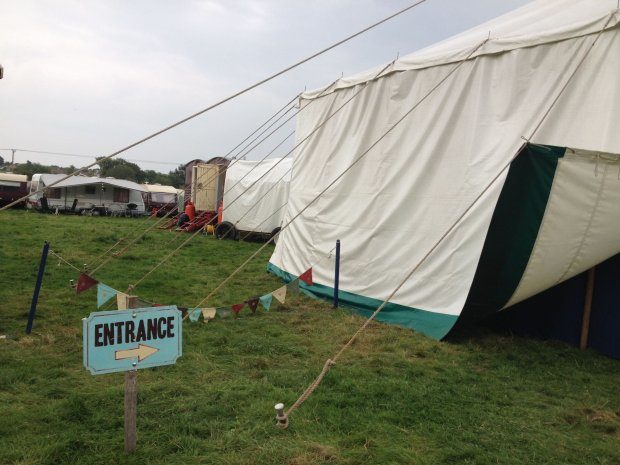
Circus Tent Photo creds Bauke Lievens
This is the second letter of a cycle of Open Letters to the Circus written in the framework of the four-year research project ‘Between being and imagining: towards a methodology for artistic research in contemporary circus’ – funded by the research fund of KASK School of Arts (Ghent, BE).
The original article “The Myth Called Circus” appeared in the July edition of Etcetera. Reposted with the kind permission of Etcetera.
[1] Doorman, M. (2012). De Romantische orde. Amsterdam: Prometheus/Bert Bakker, p. 100.
[2] Doorman, M. (2012). De Romantische orde. Amsterdam: Prometheus/Bert Bakker.
[3] https://nl.wikipedia.org/wiki/Paradox (logica)
[4] Doorman, M. (2012). De Romantische orde. Amsterdam: Prometheus/Bert Bakker, pp. 11-48.
[5] Thanks to Alexander Vantournhout for initiating this idea during the First Encounter on Circus, January 2016, KASK/Vooruit, Ghent, Belgium.
[6] Jacob, P. & Raynaud de Lage, C. (2005). Extravaganza! Histoires du cirque américain. Montreuil-sous-Bois: Editions Théâtrales, pp. 59-76.
[7] Ibid, pp. 13-24.
[8] Doorman, M. (2012). Rousseau en Ik: over de erfzonde van de authenticiteit. Amsterdam: Prometheus/Bert Bakker, p. 38.
[9] Ibid, p. 37.
[10] Berkeljon, S. (25/02/2012). Authenticiteit is nep. De Volkskrant. http://www.volkskrant.nl/archief/-authenticiteit-is-nep~a3201937/
[11] Flemish theatre critic Tuur Devens calls this ‘The Fifth Wall’. See: Devens, T. (2004). De Vijfde Wand: Reflecties over figurentheater en circustheater. Gent: Pro-Art, pp. 6-10.
[12] See previous Open Letter and Giorgio Agamben’s notion of the ‘apparatus’.
[13] The production of the ‘useful man’ (l’homme machine) takes place by way of the division, comparison and classification of the actions of the body and of the time and space where the body is located.
[14] Foucault, M. (2010). Discipline, toezicht en straf: De geboorte van de gevangenis. Groningen: Historische uitgeverij, p. 255.
[15] Haegens, K. (2016). Niemands slaaf: verlangen naar de innerlijke grens. De Groene Amsterdammer, Jrg. 12(140), pp. 36-39.
[16] Foucault, M. (2010). Discipline, toezicht en straf: De geboorte van de gevangenis. Groningen: Historische uitgeverij, p. 237.
[17] Ibid, p. 299.
[18] Doorman indicates that Foucault’s subject critique doesn’t escape the romantic paradigm either. After all, “his Nietzschean and almost malicious ardor to reveal the authentic subject as fiction implies a utopian desire for a free living individual, one who is not captured in the fine-grained structures of the discourse that disciplines it.” Doorman, M. (2012). De Romantische orde. Amsterdam: Prometheus/Bert Bakker, p. 43.
This post was written by the author in their personal capacity.The opinions expressed in this article are the author’s own and do not reflect the view of The Theatre Times, their staff or collaborators.
This post was written by Bauke Lievens.
The views expressed here belong to the author and do not necessarily reflect our views and opinions.

